So you’ve seen people online raising monarchs and are amazed by the beautiful process, or you’ve found Monarch catepillars on your milkweed plants – whatever the reason, here are some basics to know to get you started.
But first…. make sure you read This article:
Thinking about rearing Monarchs? New evidence to Consider
Some basic things to know:
? The egg stage is 3-5 days, they are caterpillars for 10-14 days, they stay in Chrysalis for 8-12 days, when they emerge, they take a few hours to expand their wings and completely dry.
*These times are affected by weather (speeds up when warmer, slows down when cooler)
? Before Chrysalis, they start wandering away from the plants, usually towards the ceiling. don’t put them back on the plant – they know what they are doing. They will find a spot to hand in a “J” shape for about 12 hours before starting the Chrysalis
? The Chrysalis is very soft when its made and shouldn’t be touched for 24hours.
? When they emerge from the Chrysalis they will be very tiny. It takes up to an hour for their wings to expand and several hours to full dry before flight is possible.
The ONLY food they eat is Milkweed – and they eat A LOT.
Be sure you have access to enough milkweed.
There are many different methods used to rear caterpillars and many of them work well. Outlined here is the method we use and have had success with.
- Eggs
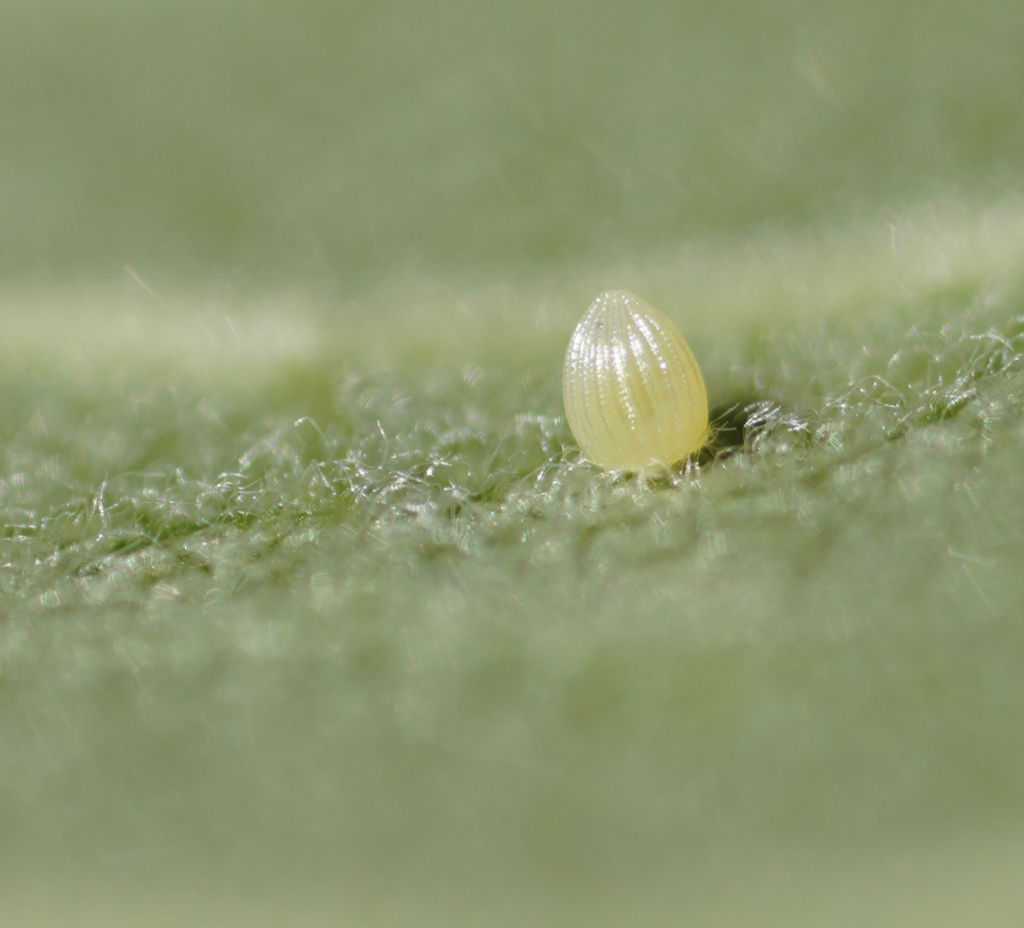
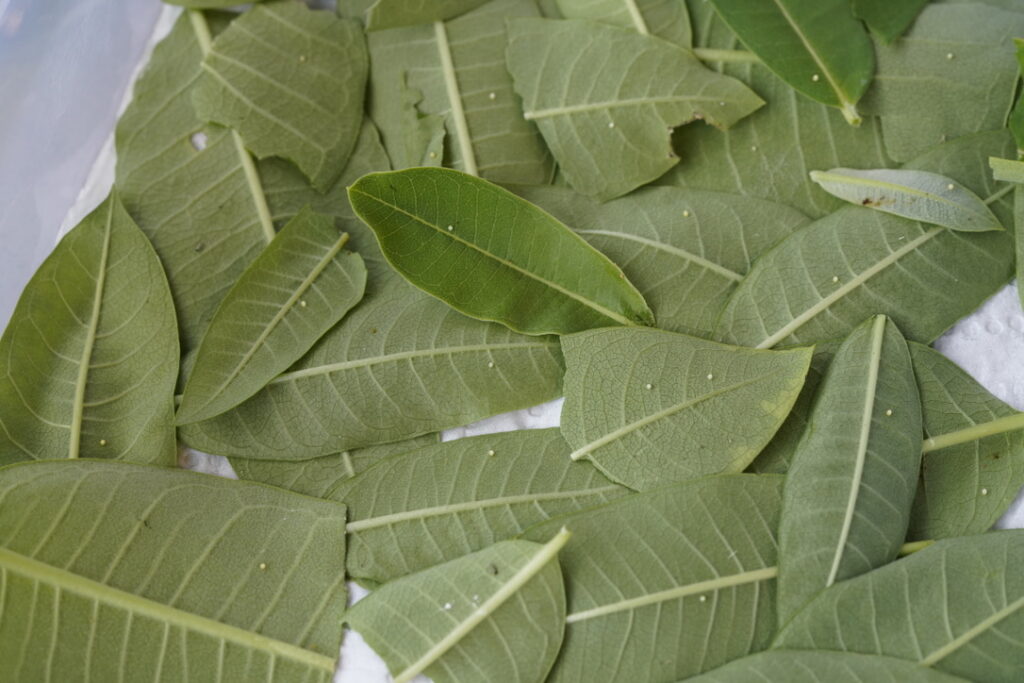
The eggs are oval shaped, and if you look closely you will see vertical ridges all around it. There is usually a single egg per plant, although there may be more. A female monarch butterfly lays the eggs one at a time and will lay about 500 eggs during her lifetime.
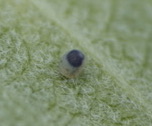
This is the head of the caterpillar.
We use a simple tupperware container lined with a dry paper towel. We keep the egg on the leaf it was found on and give it a light mist. You can take a small damp piece of paper towel and put it on the base of the leaf to keep it fresher longer.
DAILY: Replace the paper towel with a dry one to prevent mold from any humidity/dampness. Mist the leaf. *There’s enough oxygen for them in there by just opening the lid once a day. Just make sure they are not heating up in direct sunlight.


2. Caterpillar
When the catepillar first hatches out, it will have a black head and an off-white body – they don’t have any stripes yet. Many of them will turn around an eat their egg as their first meal.
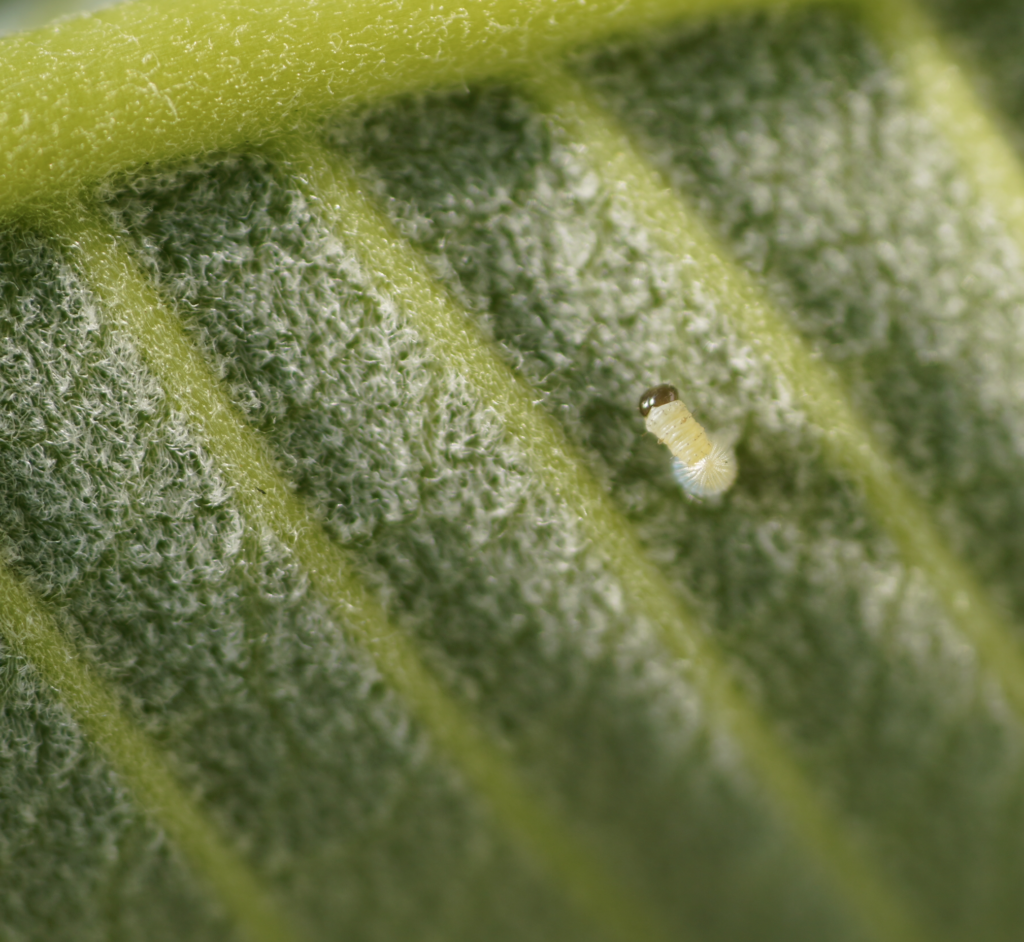

DAILY: replace the paper towel with a dry one and put a fresh leaf. There’s a small caterpillar underneath that top leaf below!
TIP – There’s no need to touch them to move them. If they are on a dried up leaf, just cut a small part of it around them and place it on the new leaf. They know to go to the new leaf on their own. In addition,
Don’t move them if they are on the lid or side of container or on the paper towel.
They go there to molt and may remain there, not moving, for a full 24 hours.
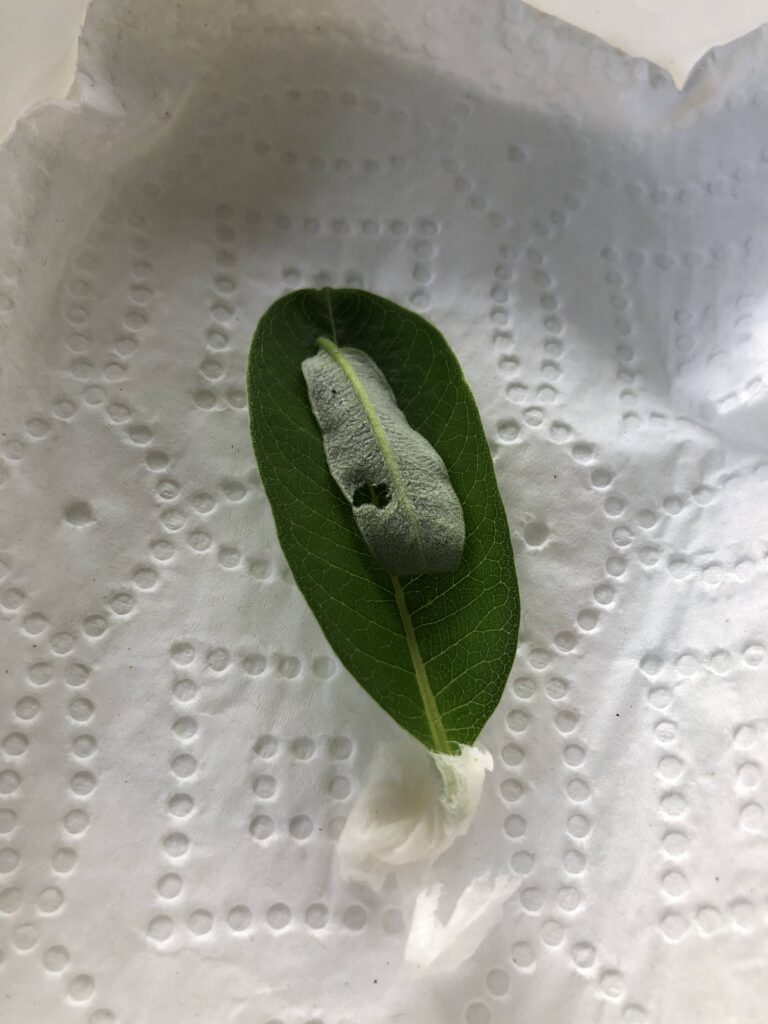
After about 5 days when the caterpillar is a bit larger, we move them from the tupperware to a screened enclosure with milkweed plant clippings instead of just a leaf.
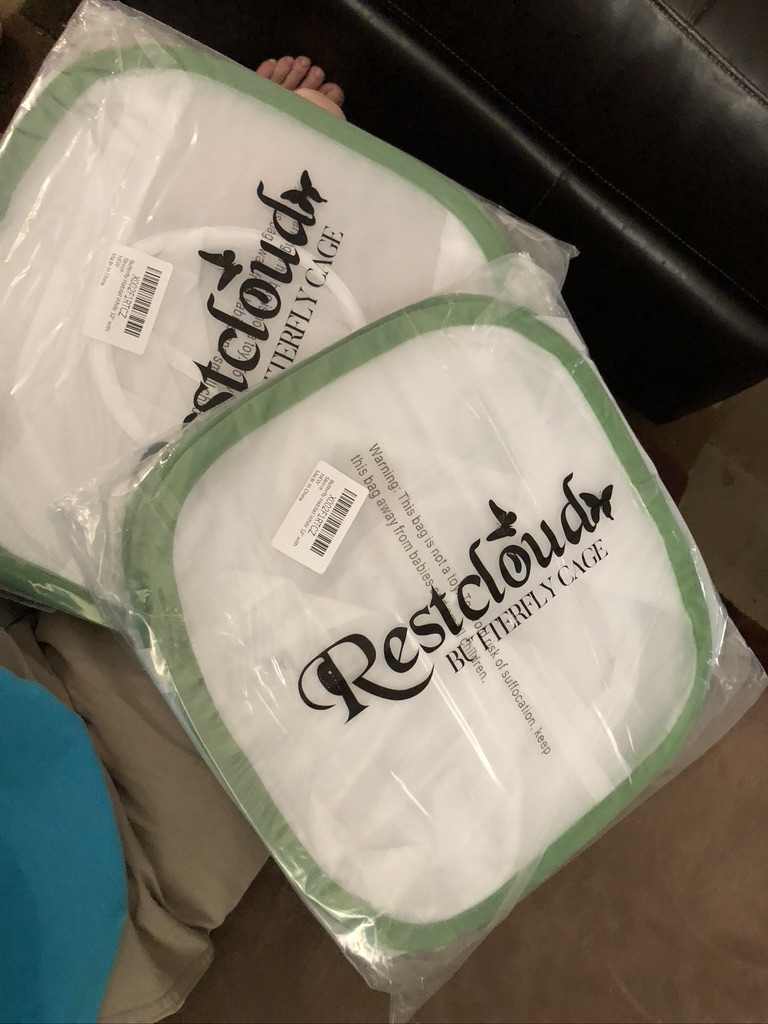
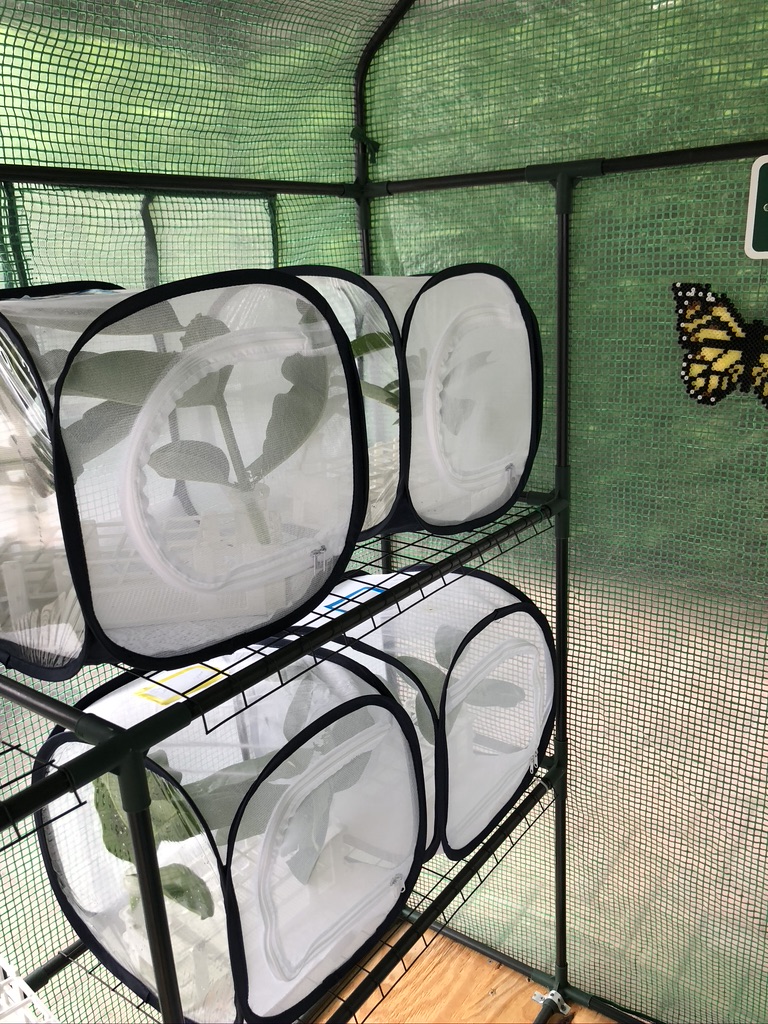
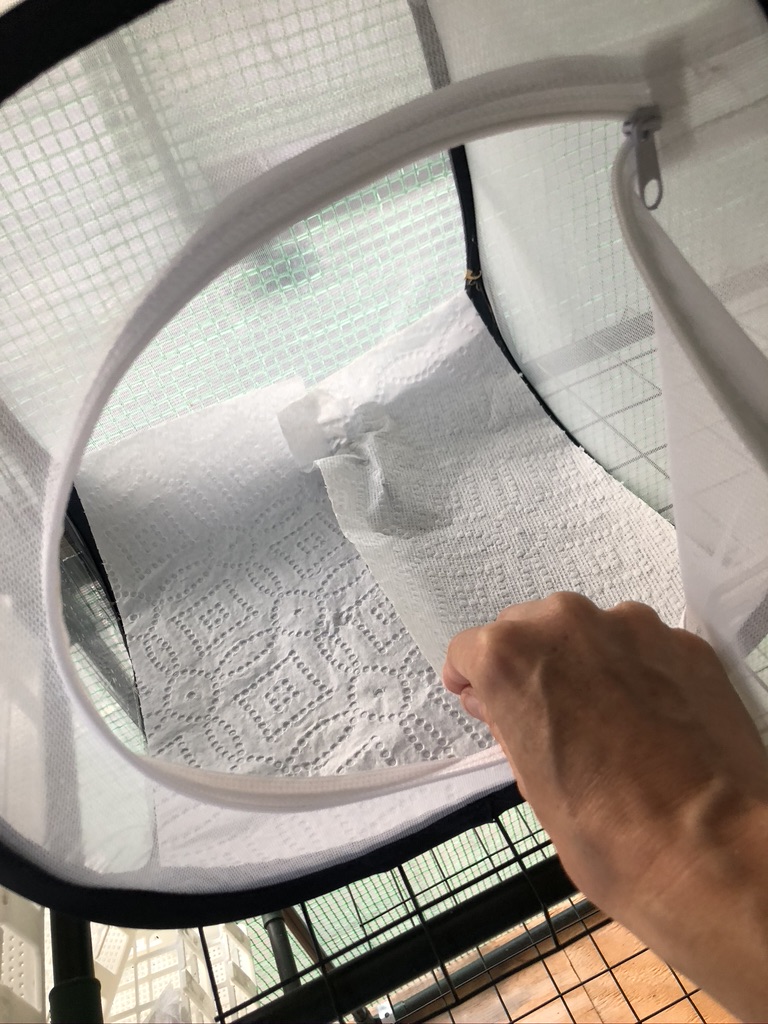
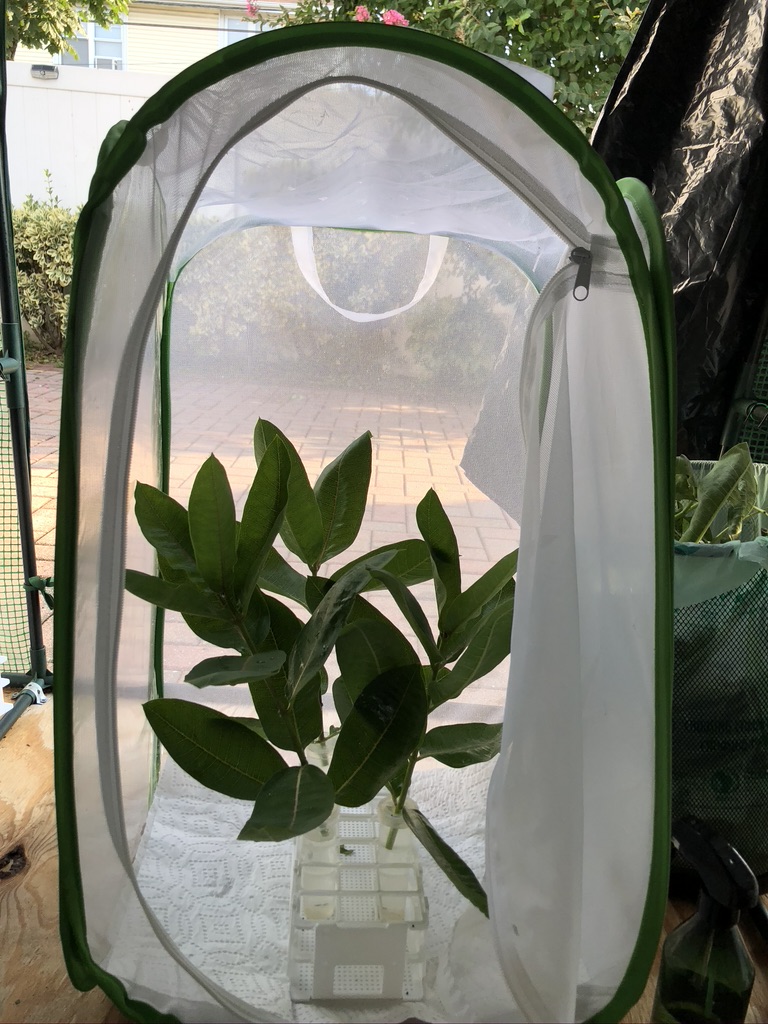
DAILY: Replace the paper towels (they poop a lot! The poop is called “frass”). Give the plants a mist and add/replace plants as needed.
As we mentioned in the beginning, there are many methods. We use 60ml floral tubes and 30mm diameter racks to hold the milkweed clippings. We fill the tubes with fresh water which keeps the clippings viable.
When your caterpillar is big and chunky, he will start to wander
…..usually to the ceiling, but sometimes in other spots. It is looking for a spot to make its silk ball, where it will hang in a J shape for about 12 hours.
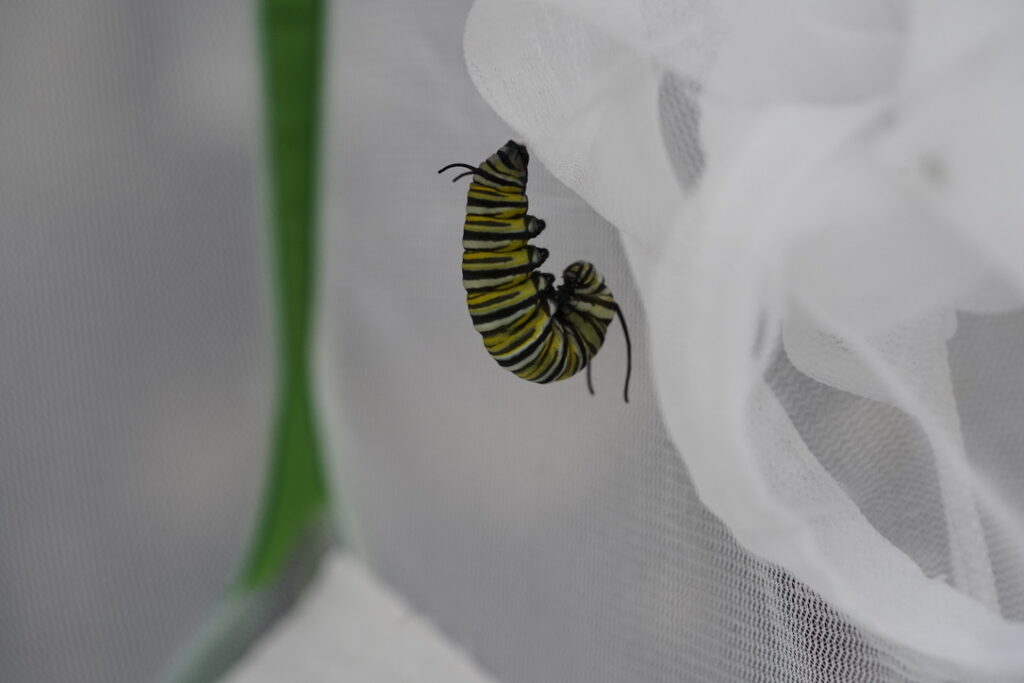
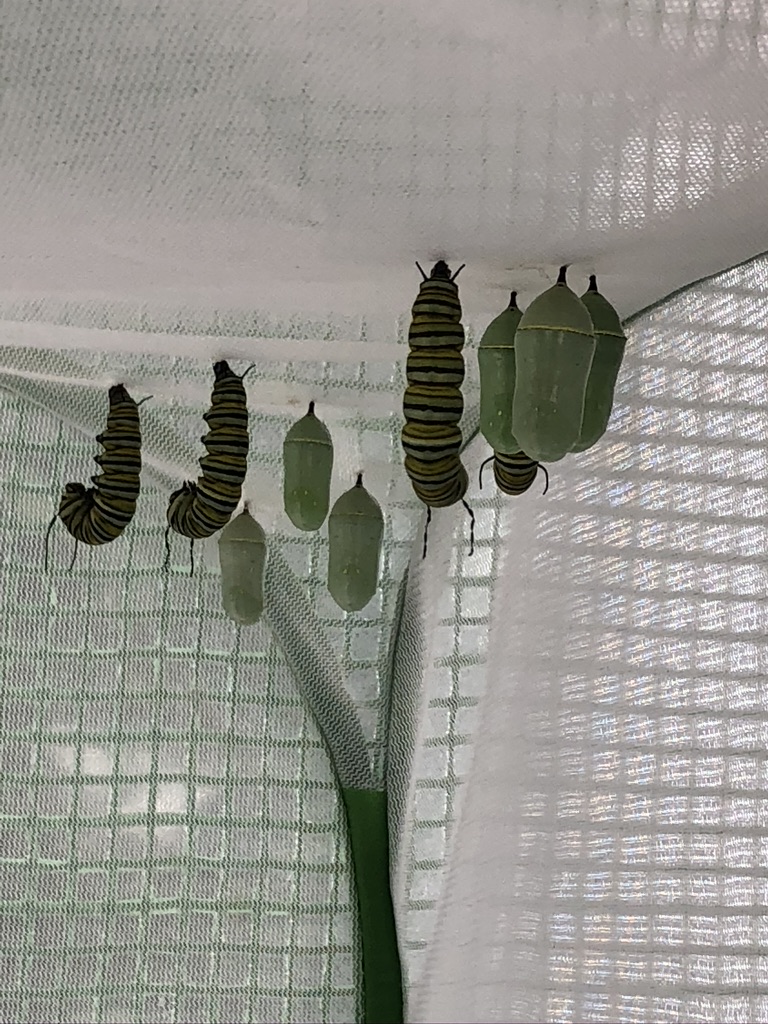
When it’s ready, the caterpillar will start the chrysalis formation which, once started, takes about 3 minutes. It’s important not to touch or move the chrysalis for 24 hours as it takes time to harden.
Great Job!
If you got this far you are a successful caterpillar parent.
Mist the Chrysalis Daily…… and wait!
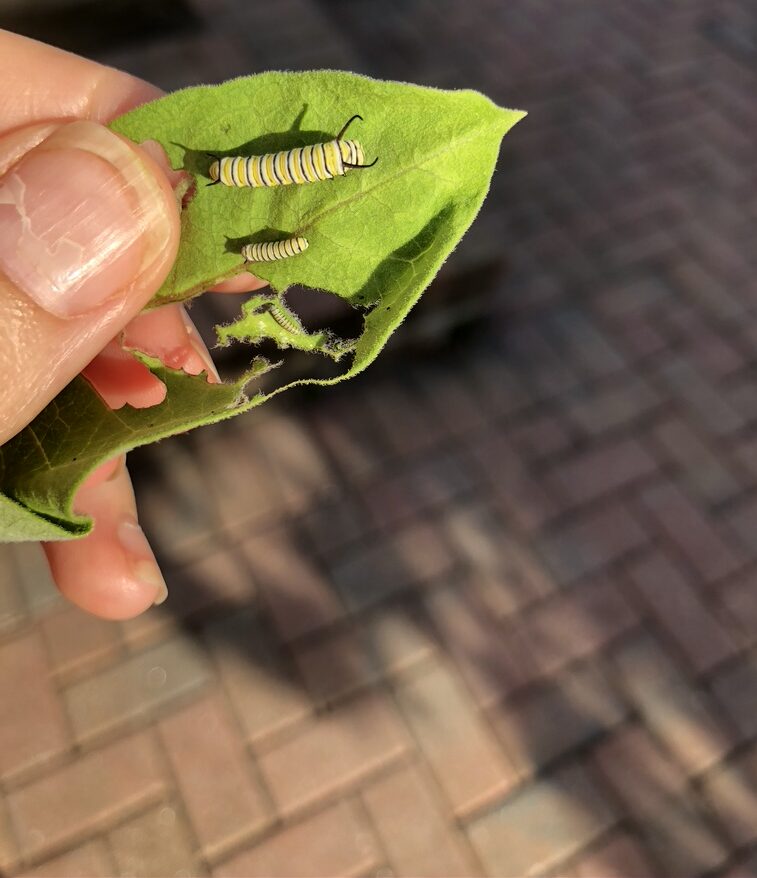
I really appreciate all you are doing for the monarch. I am in the first stages of preparing a milkweed site on our property. I would like to help raise the monarch and have milkweed ready and available for them. I have a lot to learn and find your guidance and experience so helpful.
Thanks for the note! Yes, having milkweed is not only the first step, but an amazing way to help the monarch population.